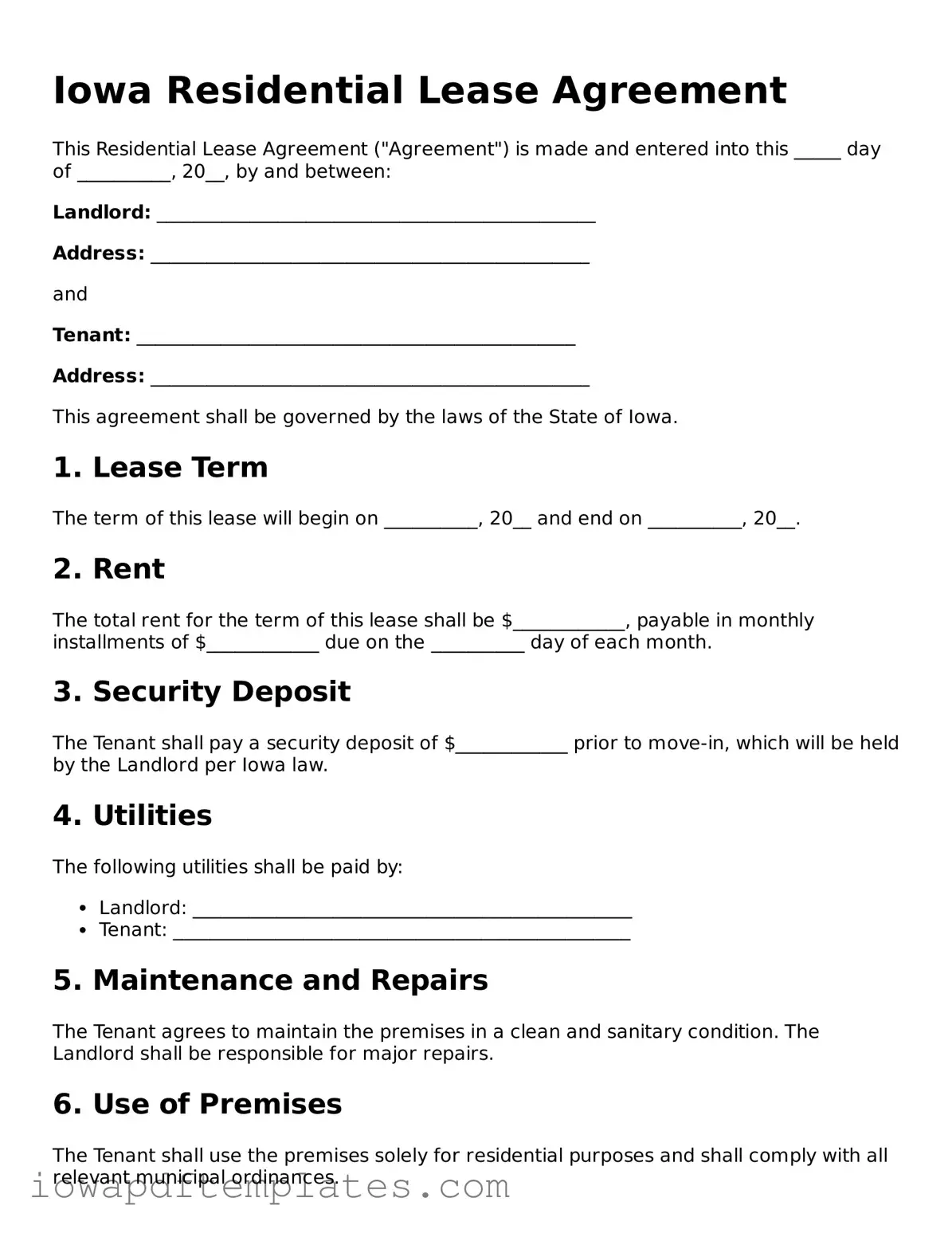Iowa Residential Lease Agreement
This Residential Lease Agreement ("Agreement") is made and entered into this _____ day of __________, 20__, by and between:
Landlord: _______________________________________________
Address: _______________________________________________
and
Tenant: _______________________________________________
Address: _______________________________________________
This agreement shall be governed by the laws of the State of Iowa.
1. Lease Term
The term of this lease will begin on __________, 20__ and end on __________, 20__.
2. Rent
The total rent for the term of this lease shall be $____________, payable in monthly installments of $____________ due on the __________ day of each month.
3. Security Deposit
The Tenant shall pay a security deposit of $____________ prior to move-in, which will be held by the Landlord per Iowa law.
4. Utilities
The following utilities shall be paid by:
- Landlord: _______________________________________________
- Tenant: _________________________________________________
5. Maintenance and Repairs
The Tenant agrees to maintain the premises in a clean and sanitary condition. The Landlord shall be responsible for major repairs.
6. Use of Premises
The Tenant shall use the premises solely for residential purposes and shall comply with all relevant municipal ordinances.
7. Termination
Notice of termination must be provided at least __________ days prior to the end of the lease term.
8. Signatures
By signing below, both parties agree to the terms of this Lease Agreement.
Landlord Signature: _______________________________ Date: _____________
Tenant Signature: ________________________________ Date: _____________
